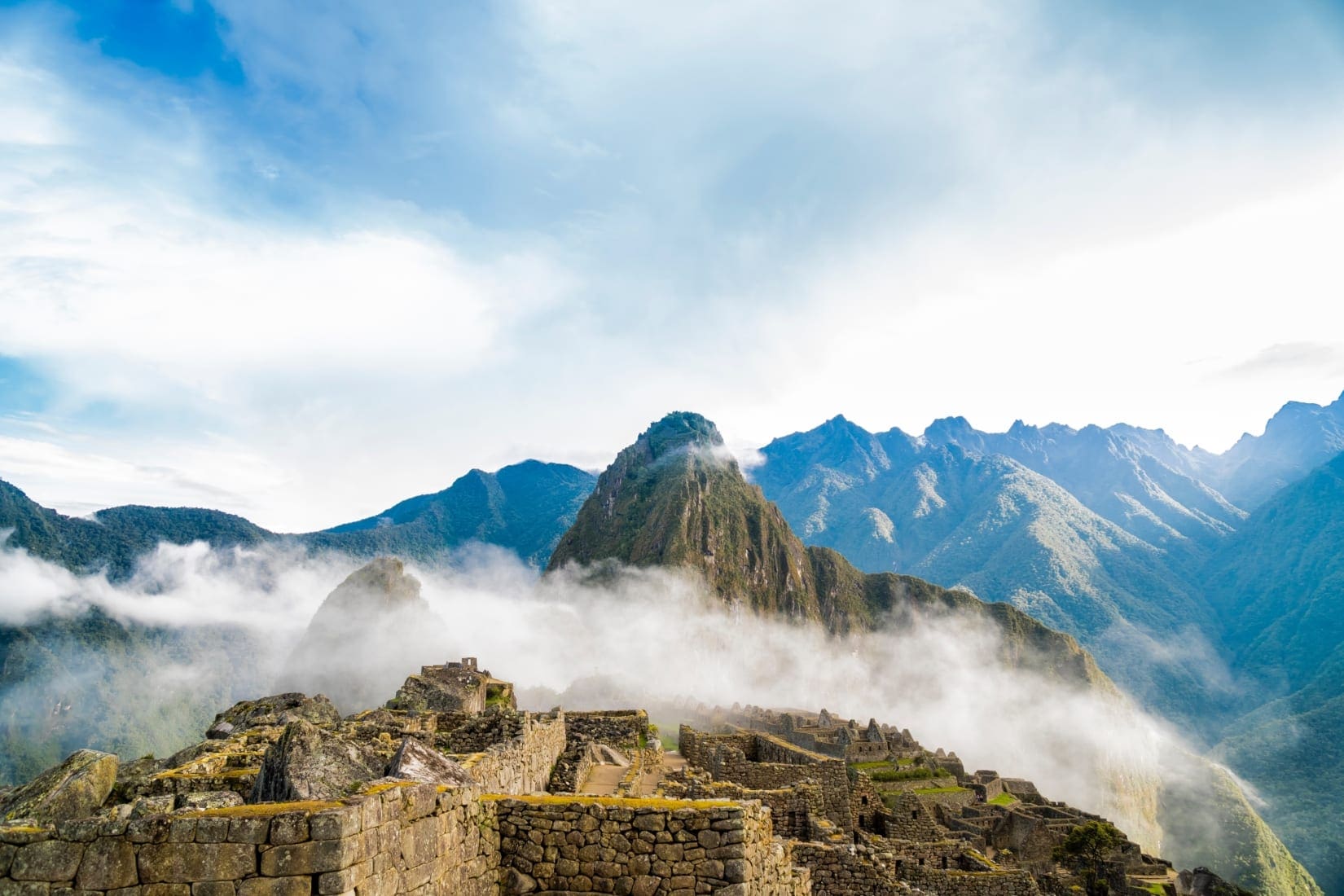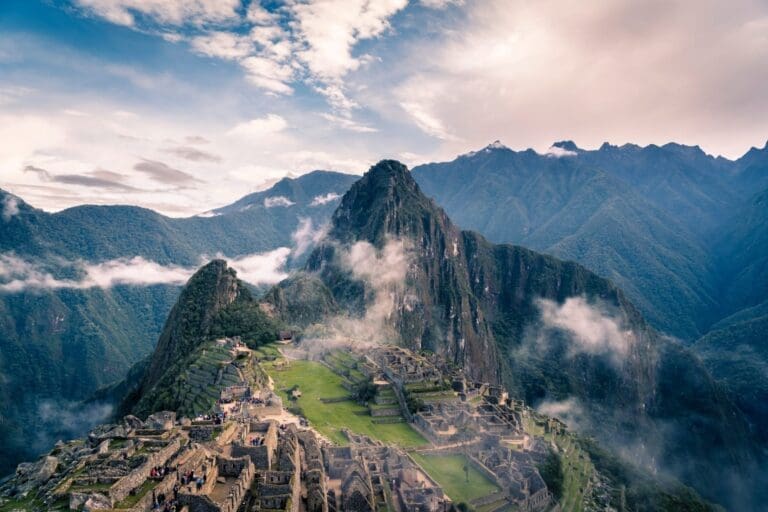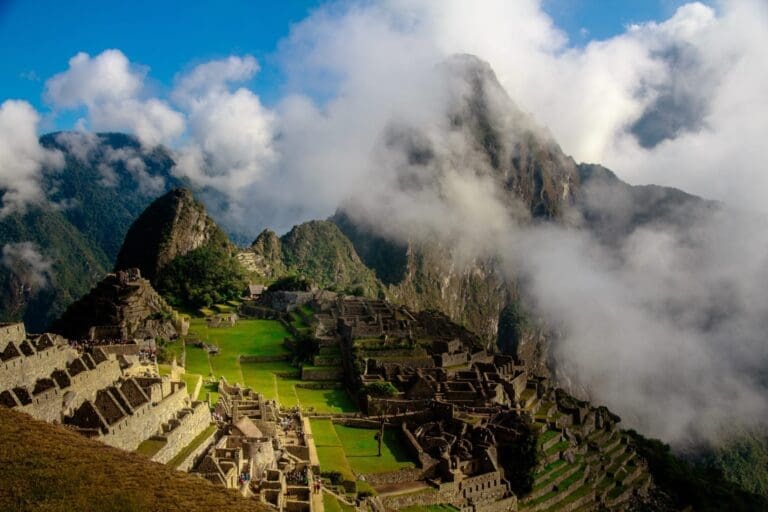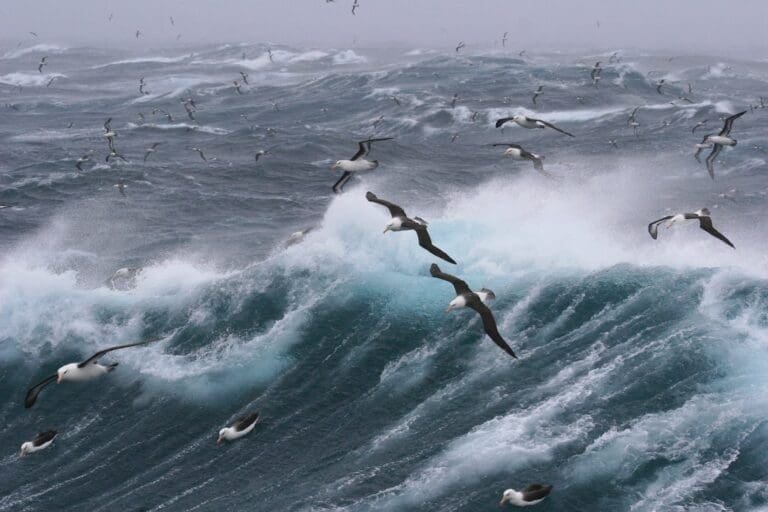Hiking the Salkantay Trail in 2025 – What You Need to Know
Often hailed as an alternative to the Classic Inca Trail route, the Classic Salkantay Trail promises to whisk you off the beaten path and into the true wilds of the Cordillera de Vilcabamba mountain range around Machu Picchu. It’s a route that’s sure to be an adventure of a lifetime. As you climb to 15,090 feet (4,600 meters) above sea level, there are ice-capped summits, glimmering alpine lakes, and untrodden valleys filled with rare vicuña herds.
Tempted? Of course you are. This guide delves into all the details of planning and completing the Classic Salkantay trek. Plus, it’ll also cover a the Hidden Valley Salkantay Trail option – a great alternative to the Classic trek. This guide will have you reaching for the passport and purchasing a new pair of hiking boots in no time at all.
About the Salkantay Trail
The Classic Salkantay Trail is a popular trekking route connecting the ancient capital of the Incas at Cusco to the jaw-dropping wonder of Machu Picchu. The Classic Salkantay trek is 46 miles in length and reaches a maximum elevation of 15,090 feet (4,600 meters) at the Classic Salkantay Pass. The entire Classic Salkantay trek is usually completed in four to six days, but there are extensions that can turn the adventure into a mega eight-day odyssey through the Peruvian Andes if you’d like.
What’s unique about the Classic Salkantay trek is the remoteness of it all. There’s an average of just 50-100 trekkers on the Classic Salkantay trek on any given day. Couple that with the places you go, from the crystal-clear waters of Humantay Lake to the zig-zagging paths through the deserted Huaracmachay valley. It’s one for those keen on experiencing the more untamed side of South America.
The History of the Classic Salkantay Trail
The Classic Salkantay Trail is known for its beautiful natural environment and breathtaking landscapes. In addition, you encounter a bit of Incan history along the way. On your journey you will be able to explore the treasured Llactapata ruins. They offer a raw glimpse of what the Incan settlements of the Urubamba Valley really would have looked like.
The Classic Salkantay Trail also follows an ancient Incan trade route that was once used to connect different regions of the Inca Empire. The trail passes through diverse ecosystems, from tropical rainforests to high-altitude grasslands, offering a variety of environments that the Incas would have traveled through for trade and religious purposes. Additionally, the trek provides an opportunity to see traditional Andean farming terraces, which continue to be used by locals to this day, keeping ancient agricultural practices alive.
The Classic Salkantay Trail also links up with the town of Aguas Calientes. Aguas Calientes sits at the base of Machu Picchu and is the resting place for the tens of thousands of people who visit the ancient Inca citadel each and every year. Most people complete the Classic Salkantay trek with an early-morning ascent to Machu Picchu, which is one of the most popular bucket-list travel destinations in the world.
What’s more, the mountain of Salkantay itself holds a deep importance in the universe of the Incas. It was thought that the soaring summit was the home of spiritual beings known as Apu, which controlled the weather, herded the wild beasts, and kept watch over settlements like Machu Picchu.
Getting to Machu Picchu
The best way to get to Machu Picchu from the trail route is the five-day Classic Salkantay trail to Aguas Calientes. The route starts at Mollepata and will take you to two famous Inca sites: Llactapata and Machu Picchu. When you reach Hydroelectric Power Station you can either take a short 20-minute train ride to downtown Aguas Calientes or walk approximately one hour to the village center. The Classic Salkantay Trail is a challenging hike with large variations in altitude and climate – from cloud forest to lush jungle. However, the views are spectacular.

The Best Time to Hike the Classic Salkantay Trail
You can trek the Classic Salkantay trail all year around, but we recommend hiking it in the drier months from April to December. The days are warm, around 62°F (17°C), and cooler at night and in the early mornings around 40°F (5°C). This path is all about the views of the snow-capped mountains and the verdant valleys that spread through the Andes below, and you’re far more likely to enjoy them without a cloud in sight in the drier months, April through December.
An Overview of the Trek
The Classic Salkantay Trek is 5 days, 4 nights long and we have outlined below the key daily site visits and stops along the trail.
Classic Salkantay Trek
Day 1 – Cusco / Mollepate / Soraypampa / Salkantaypampa
Day 2 – Salkantaypampa / Soyrococha / Abra Salkantay, El Passo / Huaracmachay / Colpapampa
Day 3 – Collpapampa / Lucmabamba
Day 4 – Lucmabamba / Hidroelectrica / Machu Picchu Village
Day 5 – Machu Picchu Village / Machu Picchu / Cusco
Altitude Considerations on the Classic Salkantay Trail
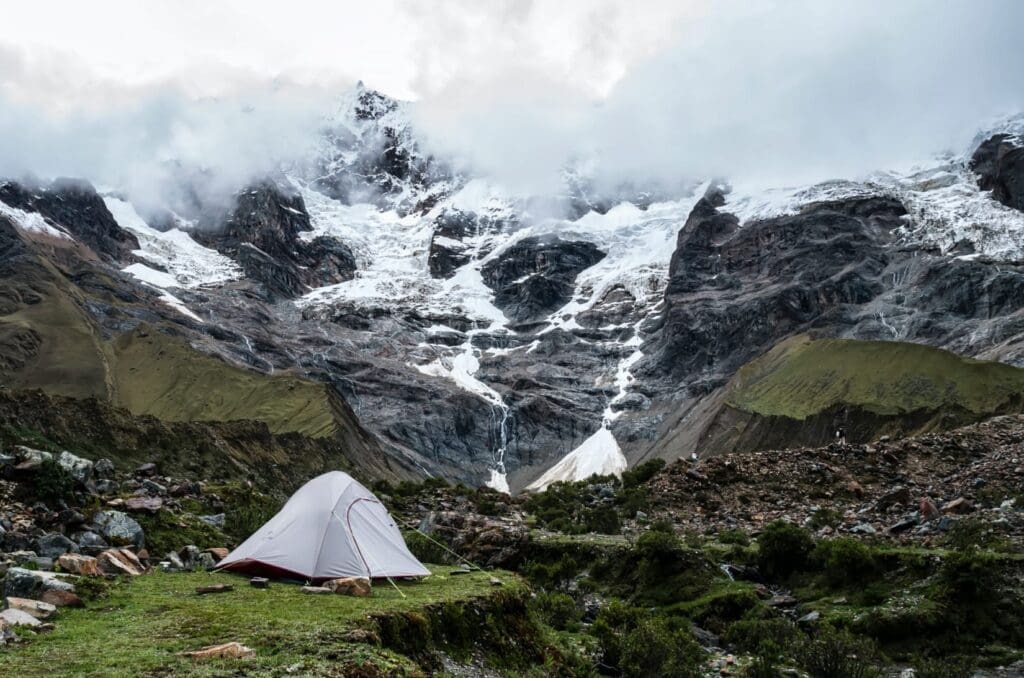
The Classic Salkantay Trail is one of the higher multi-day trekking options in the region of Machu Picchu. While the Classic Inca Trail route manages a top point of 13,828 feet (4,215 meters) at Dead Woman’s Pass, the Classic Salkantay Pass elevation is a cloud-splintering 15,090 feet (4,600 meters). What’s more, many of the campsites you stay at along the way are over 6,500 feet (1,981 meters) high.
It’s a good idea to spend at least two to three days in Cusco before you embark on the trail after flying in from Lima or direct from abroad. That should allow for enough acclimatization to get through the initial two-day push up to Salkantay Pass. After that, the trek descends into more lush and lower-altitude terrain.
Classic Salkantay Trek vs the Classic Inca Trail
While both trails offer an amazing opportunity to hike some of the most beautiful mountain on the planet as well as experience incredible history, the Classic Salkantay Trail could be a nice alternative depending on the type of trek you are looking for. If you are looking for a more rigorous challenge with higher elevation, then the Classic Salkantay Trail is the trail for you. The Salkantay Trail is also a good option if you are looking to trek on specific dates, and you find that the permits for the Classic Inca Trail route are already booked.
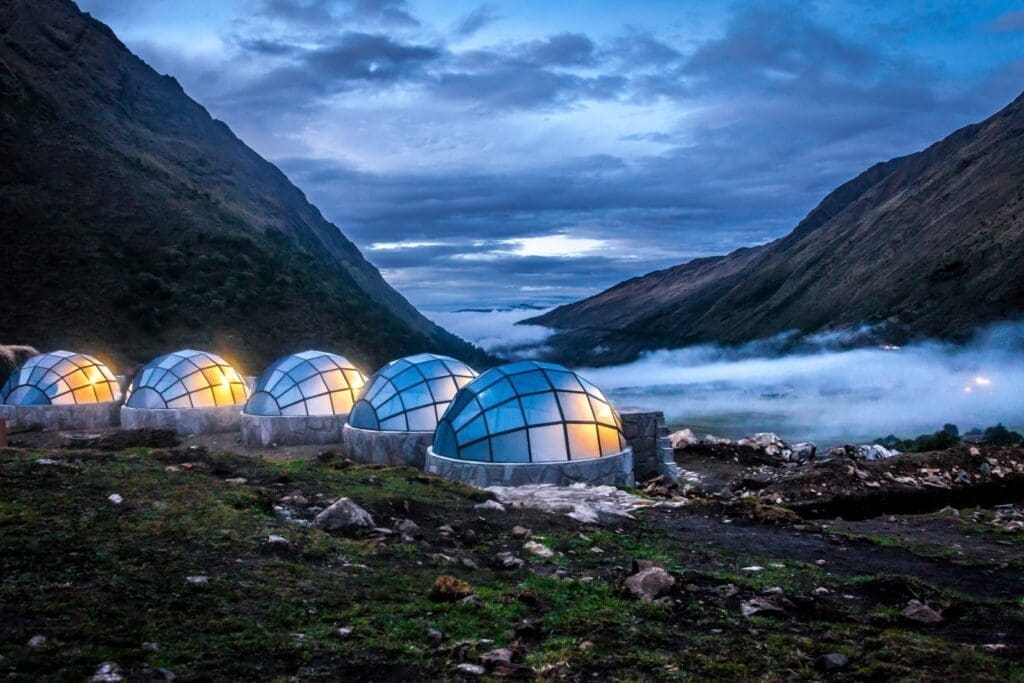
Additionally, on the Classic Inca Trail your only option is to sleep in tent camps each night compared to on the Classic Salkantay Trail where you can either stay in tent camps or choose to sleep lodges as well.
The Classic Salkantay Trail is similar to its iconic compadre, the Classic Inca Trail. However, it’s the far more challenging of the two. For starters, it’s almost double the length and takes you more than 1,262 feet (384 meters) higher. The terrain is also considerably more advanced, with much of the walking through more-remote valleys, making for extraordinary views.
Hidden Valley Salkantay Trail Route
Another option for trekkers is to do the Hidden Valley Salkantay Trail option, which is a slight variation on the Classic Salkantay Route. It swaps out the busier paths that weave up the valley from Mollepata for something a little more rustic, more local. Treks begin in the untrodden foothills of the Cusco Andes north of Limatambo, a little to the east of the traditional start point. There, you’ll climb through lush fruit farms tended by local people to higher plateaus that have been used to grow potatoes since ancient times.
The second day of the Hidden Valley trek is the hardest of the lot. You’ll enter the domain of the Andean condor as you gain altitude and conquer the Tocto Pass at a whopping 16,000 feet (4,877 meters) above sea level. There’s a real pinch yourself moment here, as you watch the mighty massif of Apu Salkantay, the holy mountain, come into full view, its avalanche-scarred sides cascading off a gleaming glacier.

After that climax, you descend down into the secret Shangri-La of the Pampacahuana Valley. It’s still inhabited by farmers and highland communities who have tilled the land since the days of the Incan emperors. You’ll camp there, as the mighty ice caps of Veronica Mountain gaze down from overhead. You’ll eventually link up with the starting point of the legendary Inca Trail and hitch a train up to Machu Picchu, the lost city in the clouds.
The Hidden Valley variation has become increasingly our preferred route for guests in recent years as the classic Salkantay route has gotten busier and busier. We see it as a great choice for trekkers most interested in getting a feel for the human history and culture of the region and a raw sense of the sublime nature of the Andes, all without the booming crowds.
However, no matter what trek you end up deciding to do, it will be an adventure to remember. On the Classic Inca Trail route, you will immerse yourself in the world of the Incan Empire, on millennia-old paths. On the Classic Salkantay Trail, you will be walking amongst the snow-capped peaks and the cloud forests of the mighty Andes mountain. On the Hidden Valley Salkantay Trail, you will experience the authentic local history and culture while basking in the raw beauty of the Andes without the large crowds. You cannot go wrong with any of the options, and there is no doubt you will have an extraordinary experience. Lastly, there is always the option to extend your trip and explore multiple treks, check out our Complete Guide to Hiking the Inca Trail to Machu Picchu for some inspiration!
If you have any questions on either the Salkantay Trail or The Classic Inca Trail you can contact me HERE!
I hope to see you on the trail!
Cheers,
Jeff
Jeff Bonaldi
Founder & CEO
The Explorer’s Passage
About Jeff Bonaldi
Jeff Bonaldi is the Founder and CEO of The Explorer’s Passage, a premier adventure travel company. His mission is to provide travelers with the opportunity to transform their lives and the planet through the power of adventure.
Learn more about Jeff’s story and his company HERE.
Share this amazing location!

